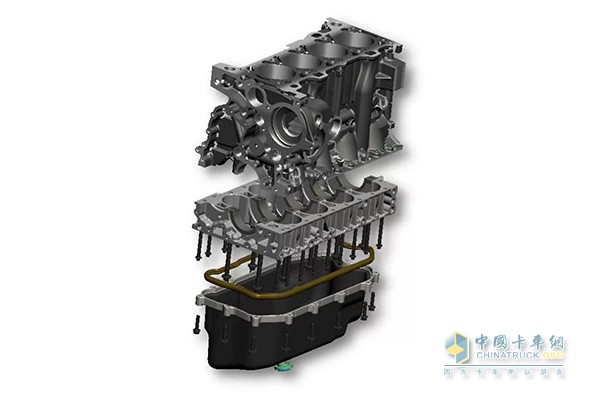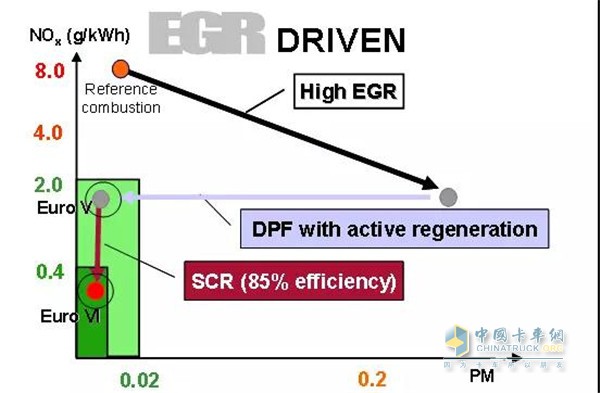At present, FIC has been adapted to the five national emission needs countries. In Europe, F1C not only has reached Euro 6 emissions, but also passed the EU RDE testing standards and achieved the rigorous environmental protection goals of 2020 three years ahead of schedule. So what are the characteristics of this high-performance engine? Today, everyone will see with me! Dual mass flywheel Due to the considerable vibration between the engine and the transmission when the diesel engine is running, in order to reduce the impact of diesel engine vibration on the comfort of the vehicle, the F1C cancels the common rigid flywheel and uses a dual mass flywheel (DMF). The dual-mass flywheel is composed of two flywheels, which are flywheel disks connected to one end of the engine and flywheel disks connected to one end of the transmission. These two parts are connected by two spring shock absorbers. When the active part drives the driven part, Spring shock absorbers play a role in reducing engine output vibration. This makes the F1C engine feel a little turbulent during the idle period, allowing the commercial vehicle's cab interior to reach passenger car comfort. Hydraulic tappet Because the engine valve clearance will appear too small in the case of a thermal engine, the cold engine will be oversized. If the valve clearance is too short to shorten the intake and exhaust time and reduce the intake and exhaust volume, the power of the engine will be indirectly reduced, and the impact of the valve and the valve seat will be increased. In severe cases, the valve spring may break and the valve may fall. Into the engine caused by the boring tank; and the gap is too small will make the valve closed lax, leading to engine leakage, will also lead to power drop, and will cause engine carbon deposition. Under normal circumstances, the driver will adjust the valve clearance to compensate, but can not accurately size the valve clearance. The F1C uses a relatively high number of hydraulic tappets used on high-speed engines, and automatically adjusts the valve clearance by hydraulic pressure, eliminating the need for manual compensation in addition to precise adjustments. Timing chain Timing drive systems on most vehicles use the synchronous toothed belt in the above diagram. This belt can connect the timing gear of the engine crankshaft and the timing wheel of the camshaft to realize the engine air distribution mechanism and the crankshaft. Accurate gear ratio. The belt drive has the advantages of low noise, compact structure, easy compensation, light weight, and low cost, but its biggest drawback is that if it breaks, it will cause problems for the rest of the engine components. In order to ensure the reliability of the valve train working, F1C improved the traditional belt drive into a chain drive, without the slippage brought by the belt drive rubber, plus the chain does not require the same tension as the synchronous toothed belt. To ensure meshing, the load on the shaft and the bearing is small. In addition to the above features, the chain drive also has the characteristics of strong overload capacity and relatively smooth transmission ratio, which can almost reach the maintenance-free state. Cast iron cylinder block and aluminum cylinder head The F1C is made of cast iron like most engines, and only a part of the engine manufacturers use aluminum engine block designs to reduce the weight of the engine and achieve a lightweight design. So why is the cast iron engine still the mainstream? For example, for example, after processing, the ductile iron tensile strength can reach 1400Mpa, while the more widely used 7A04 (LC4) superhard aluminum after treatment, the tensile strength is 600Mpa; the density of the ball-milled cast iron is 7.3, 7A04 (LC4 ) The density of superhard aluminum is 2.85. If we want to achieve the same strength as spheroidal graphite cast iron, the volume of aluminum is about twice that of iron. Although the volume is twice, the weight will still be reduced by 40%. In other words, the cast iron cylinder body is more lightweight than the aluminum cylinder body, but its volume is reduced, which is favorable for the design of the engine structure. However, because aluminum has better thermal conductivity than cast iron, it can help improve the compression ratio of the vehicle and reduce the sudden explosion of the engine. This can reduce fuel consumption, increase power, reduce noise, and improve vehicle comfort. Coupled with the fact that the quality of aluminum is significantly lighter than iron, aluminum cylinder heads have made a contribution to the lightweighting of vehicles. The F1C has a length of 617mm, a width of 653mm, a height of 798mm, and a weight of only 247kg. Due to its length and width, the engine can be horizontal or vertical. The above two features make F1C compatible with various application platforms such as commercial vehicles and passenger cars. F1C has already met the current national V emission standards. In the face of the upcoming national VI era, the advantages of FPT engines have become even more obvious. we have over 10 years experience in making various size Strut Channel product. Strut Channel Strut Channel,Unistrut Channel,Unistrut C Channel,Z Shape Steel Channel Unovo Machinery Co., Ltd. , https://www.rollformingprofile.com F1C 3.0-liter high-efficiency diesel engine
F1C 3.0-liter high-efficiency diesel engine  F1C 3.0-liter high-efficiency diesel engine data display
F1C 3.0-liter high-efficiency diesel engine data display
As the heart of New Daily , F1C is stepping into the frontier of industry technology from birth to upgrade. Since FPT launched the F1C 3.0-liter high-efficiency diesel engine in 2005, it has become the mainstay of FPT in the international light engine market. Its application covers trucks, buses, and light commercial vehicles.
January 10, 2020